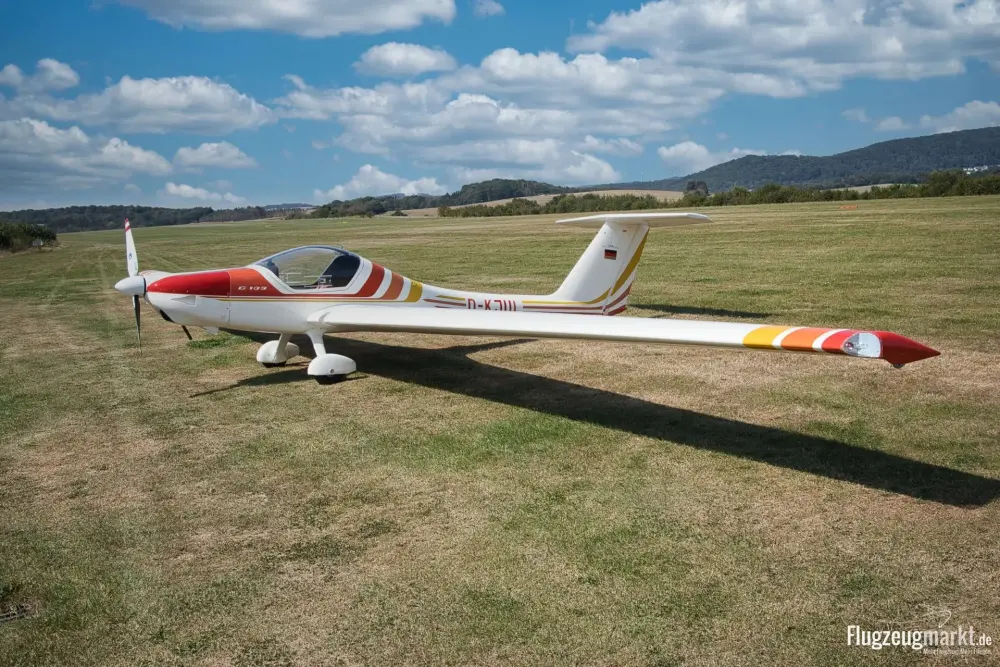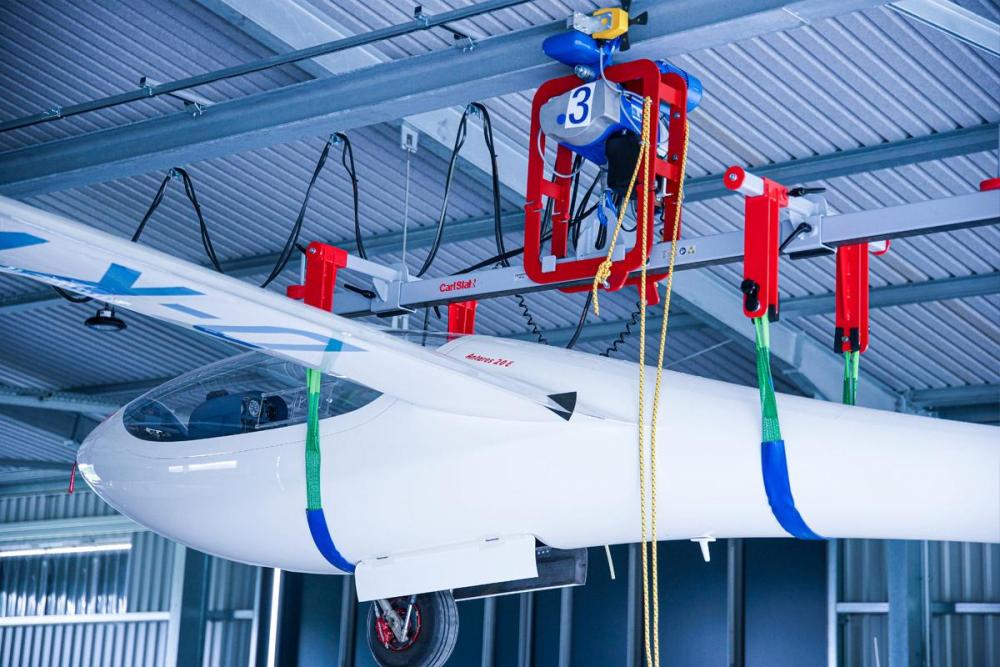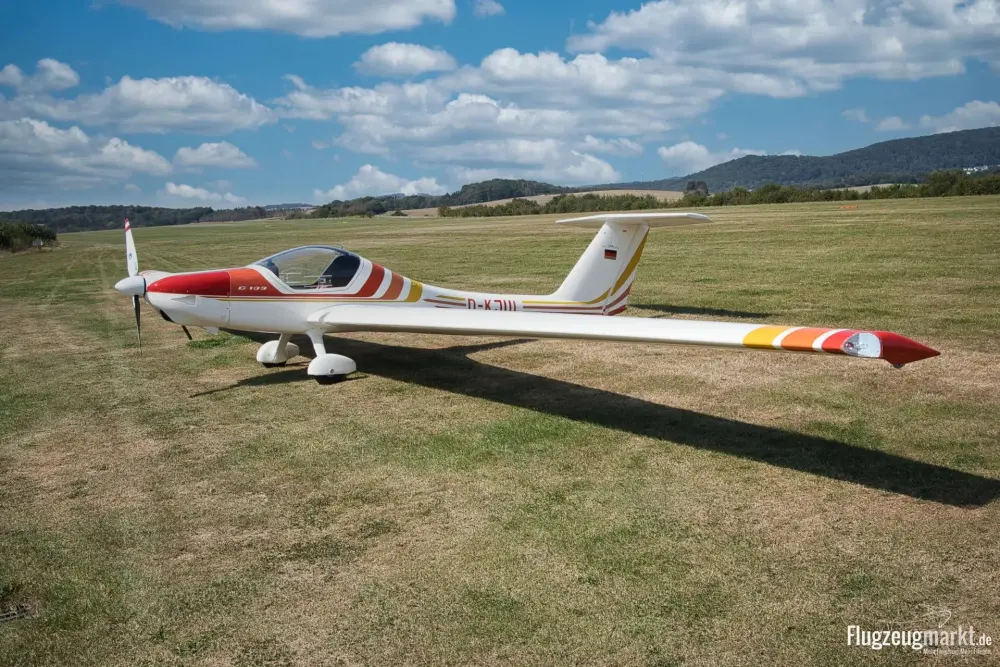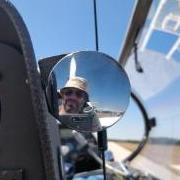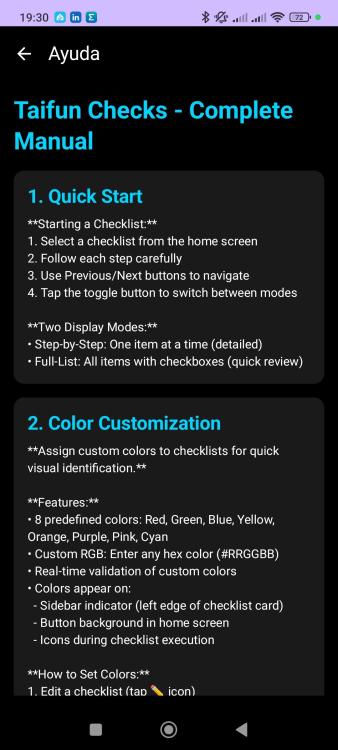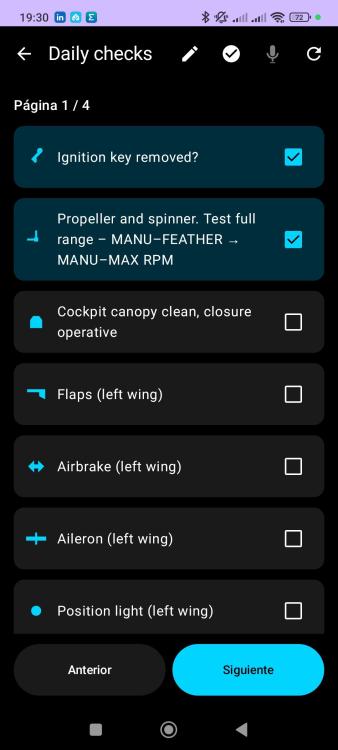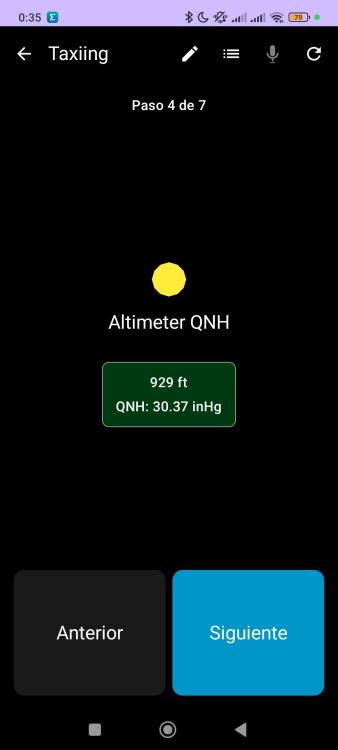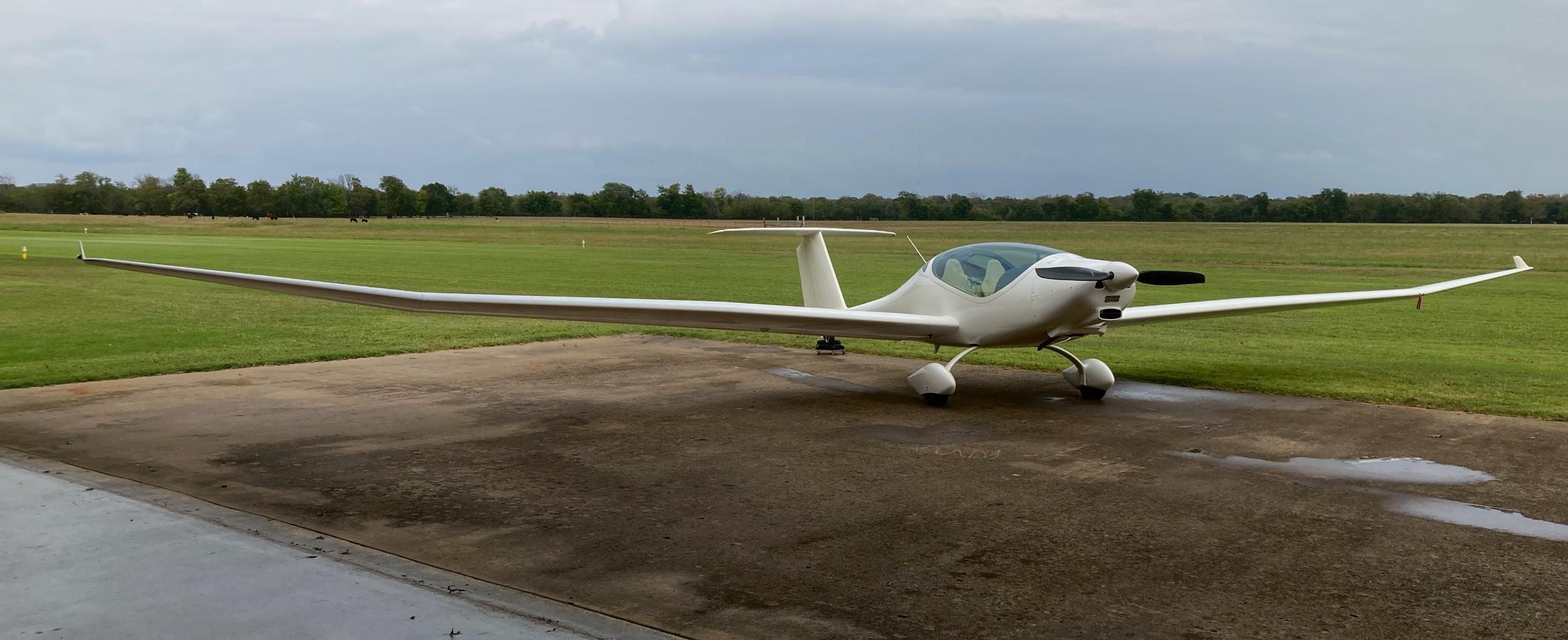All Activity
- Last week
-
Mike McLean joined the community
-
Martin started following Reducing drag on a Grob 109A and How to hang a TMG from the ceiling of a hangar
-
Helle just bought a Grob 109 new to the forum. Seeking advice on how to it to the ceiling of our hangar. Was thinking about a system gliders use. Since many TMG like Dimona, Taifun and many have similar shapes I would like to ask for Your experiances. Best regards, Martin
- Earlier
-
So awesome. Excellent.
-
Thank you for replying, and providing contact numbers so I can contact as look into TMGs. Sorry for the later reply. It's a sport I plan to get more into as I get closer to retirement in a few years. In meantime, doing my homework during such time and then ready when my time is mine (retired). Still researching between non-motorized gliders I can unpack at a soaring field, versus TMG. But, the ease of being able to motor at local airport and fly, and have the combined soaring experience is very attractive. I'm not purist. The drive to the soaring field/location are several hours from me. I'm guessing that will weigh in heavily, the convenience factor, as I get closer to deciding. Thanks again for the reply. I'll likely contact over next months or year as I cont. to dig it.
-
We are planning to hang the plane from our hangar sealing. It will be importatnt to lift at a proper position. Are there examples that work. It would be great hear from them. Thank You
-
Hello, as just posted I bought a Grob 109A. For this winter the plan is to install gap seals from Streifi, a polish the wings. I am shure there must be a lot other measures to improve glide ratio and speed. Do have suggestions ( Bellows on the aileron , speedbracke shafts etc.), canopy seals etc. Best regards to all Martin
-
-
Martin joined the community
-
Pierre-Yves joined the community
-
Jorge started following Android app for Taifun checklists
-
Hi all, I've created an Android app to help and make easier all checklists for our Taifun 17E. It is fully adaptable to any aircraft and I believe it is easy to use, including voice commands for hands free use. It is still in test phase so it cannot be directly accessed in Google Play, but I can add anyone interested in the test list so you can download it there. I'd just need you to share the email address you use in Android. Of course this is a personal project, so feedback is very welcomed. Cheers, Jorge Some snapshots:
-
Kirby Mills joined the community
-
Morning Glory running hot this year.
Barry.h replied to Barry.h's topic in Phoenix S-LSA Motorglider
This was our best Morning Glory by far. We finsished the day #2 in the world on WeGlide! -
Gilbert Mellet joined the community
-
New mechanism for rudder flutter issues
Tom Clary replied to AlanKoz's topic in Phoenix S-LSA Motorglider
Thanks Jim. Wise as always. Now if we could actually get JMB to engage. Tom -
You da man Jim
-
Thank you for your request. The US equivalent to this part # is 752959 with 2 pieces of ball stud #4486MD. I have attached drawings for your review. 752959 - $23.88 each 4486MD - $3.07 each Lead time is approx. 7 to 10 days to ship after receipt of order. We accept Visa, Mastercard and American Express. Please note that due to their special nature, gas springs are non-returnable. Please let me know if you need additional information. Regards, Janette Fisher Magnus Mobility Systems, Inc. 1912 West Business Center Drive Orange, CA 92867-7906 Tel: +1-714-244-3933 (DIRECT) Fax: +1-714-744-0134 E-mail: jfisher@magnusinc.com
-
VID_20250223_193520_00_802(2).mp4
-
Saw a strut company on line. Probably need to take some measurements.
-
Sorry, but I can't find the link.
-
Jamie Phoenix started following Phoenix U15 for sale
-
I replaced mine a couple of years ago. The link is somewhere on this website.
-
mikeschumann started following Canopy gas strut
-
Where can I get replacement canopy struts for the Phoenix? Any suggestions on how to replace them?
-
New mechanism for rudder flutter issues
Jim Lee replied to AlanKoz's topic in Phoenix S-LSA Motorglider
Hi TC and All, Sounds like a challenge so I will try to take this on. And I will speak for Ed as best I can and he can chime in as warranted. Ed and I have been as insistent as is possible to be. And we have been worn down by the lack of responses or discussion from the 2 past and current Phoenix manufacturers. Most of what I know about aerodynamics and composite structures comes from my aeronautical engineering background at the University of Colorado, my work on a composite stealth aircraft at the Raspet Flight Lab at Mississippi State University, independent study, and gleaned information from the sailplane industry. Ok, maybe some YouTube videos as well. My understanding of the Phoenix aircraft comes from being the US agent for Phoenix s.r.o., test flying every Phoenix I sold including flutter testing, multiple trips to the Phoenix factory where I worked side by side with the fabricators, and exhaustive conversations with Martin Stepanek, Pavel Urban and Mirek Kabrt at Vanessa (who did engineering work and CZ certification for the Phoenix and the VL3). Flight testing of every Phoenix that I sold proved that IN SMOOTH AIR there is no flutter on any control surface up to 150kts. HOWEVER, during attempts to excite flutter by sharp raps on the control stick or rudder pedal, mild flutter could be induced as low as 135kts on the rudder (during the pull up with a positive angle of attack while decelerating). Once this was found, no further flutter excitation tests were performed above this speed. Phoenix Air s.r.o. built a Phoenix with sensors embedded in the wings, fuselage, rudder, and elevator. The Phoenix was suspended on cables, and vibrators were used to establish a flutter speed. They found the need to add counterweights to the elevator, but none to the rudder. I strongly disputed this finding. Phoenix Air subsequently starting building elevators with outboard "horns" as counterbalanced elevators. During my ongoing production Phoenix flight testing I was now able to excite flutter on the new elevator at 130kts whereas the "old" non-balanced elevator would not flutter at any speed. I reported this finding to Martin and again urged counterbalancing the rudder. I have followed up with Pure Flight and JMB with this concern. I have seen the photo of the JMB "solution" to rudder flutter. I have never seen or heard of any device such as this but I don't dispute that this is an existing device on other aircraft that I don't know about. But it certainly does not exist within the current sailplane designs. Sailplanes use lead counterbalance weights ahead of the hinge line on the spine of the control surface. (If there is not room for enough lead, such as with Dick Butler's Concordia, a heavy metal - tungsten, is used). My Jonker JS1 and my Binder EB29R both have lead counterbalanced rudders. And the maintenance manuals dictate the weight range of the rudder ahead of the hinge line and the moment arm permissible. In the case of a repair or painting, the rudder must be reweighed with it hinged on the hinge line and a scale on the trailing edge. These numbers are documented in the manual. We have not been given this information which leads me to suspect that the counterbalanced weight of the rudder has never been an item of concern from the factories. And it should be. Barry Hendy reported in August following a trip to the factory that "The consultants explained that their testing had identified a flutter mode that was possible in the existing design. My understanding is that it is a multimodal interaction of the rudder and the tortional twist of the T-tail. The prime solution is to add mass balance to the rudder. They have a new rudder design that was fitted to their test aircraft and they were expecting to begin testing soon. (That was late May). The overall weight has not changed but it has mass balance down the front of the spine. There was discussion about the spring-loaded tension of the rudder pedals being a possible factor and there is a design for a closed-loop rudder cable system. They were undecided if this was necessary and would be part of the solution." Well, what says the factory now? As an LSRM, I am legally allowed to remove the rudder and add counterbalance weights to the rudder as per a factory bulletin. It will be easy to do and is the correct response to address rudder flutter. Also, the Phoenix is very nose heavy. It is actually at the front end of the CG range as it comes from the factory. I have added a 35 lb car battery to the baggage area of my Phoenix to provide lots of engine off power and to shift the CG more to the rear. It flies and thermals much better that way. Adding lead counterbalance weights to the rudder will actually help that situation too. An additional inquiry should be made to the attachment of the rudder cables to the rudder. This is via swaged cable thimbles onto a bolt. There is some play at this attachment which can also produce flutter. For now, as always, it is imperative that your feet on the rudder pedals produce the resistance to flutter, especially at speeds above 120kts IN THE CONVECTIVE LAYER which produces the turbulence which can excite the rudder into flutter. And never use the autopilot in the convective layer because as the plane enters lift, the autopilot drops the nose and you are above Vne in a flash. As far as I know, there has been no testing regarding flutter when the zig zag tape has been applied to the rudder. Consequently, I will not add the zig zag tape to my rudder until I see the factory data. Even then, I will reproduce my own flight testing to prove that it does not have a negative effect. As to a speed reduction bulletin, as far as I know, JMB has still not gone through any ASTM approval process and is not a recognized LSA manufacturer by the FAA. Therefore, they have no authority to issue any bulletin regarding the Phoenix. Finally, as I said before, I have not heard of the gizmo that JMB proposes to add as flutter protection. That's right, gizmo, gadget, contrivance: I intend those to be derogatory words in place of much stronger words that I could use to show my disdain for JMB and their lack of timeliness and common industry standards in attacking this issue. Not to mention their utter failure to communicate with their loyal Phoenix owners around the world. Long live the Phoenix! Jim Lee -
New mechanism for rudder flutter issues
Tom Clary replied to AlanKoz's topic in Phoenix S-LSA Motorglider
Sorry to ask this out loud but why are there not more insistent questions about this? JMB, Ed, JIm: I know you monitor this board. Answer the question.... Tom -
New mechanism for rudder flutter issues
AlanKoz replied to AlanKoz's topic in Phoenix S-LSA Motorglider
Try this one.. I loaded it from my google drive. Andrea Clauss in France will have the rudder linkage installed he told me as he will fly to JMB with his Phoenix. He can tell us all how this goes. -
New mechanism for rudder flutter issues
Tom Clary replied to AlanKoz's topic in Phoenix S-LSA Motorglider
Thanks Alan, This picture did load for me. I am guessing all of us would appreciate more information about the modification . Tom -
New mechanism for rudder flutter issues
AlanKoz replied to AlanKoz's topic in Phoenix S-LSA Motorglider
Tom There is nothing official from JMB yet on the fix. Alan -
New mechanism for rudder flutter issues
AlanKoz replied to AlanKoz's topic in Phoenix S-LSA Motorglider
I inserted the picture again. It works for me when I open the PHNX forum. -
New mechanism for rudder flutter issues
AlanKoz replied to AlanKoz's topic in Phoenix S-LSA Motorglider
-
Upgraded 530 to WAAS, never installed after upgrade 14/28 $3,900 rex911er@gmail.com
